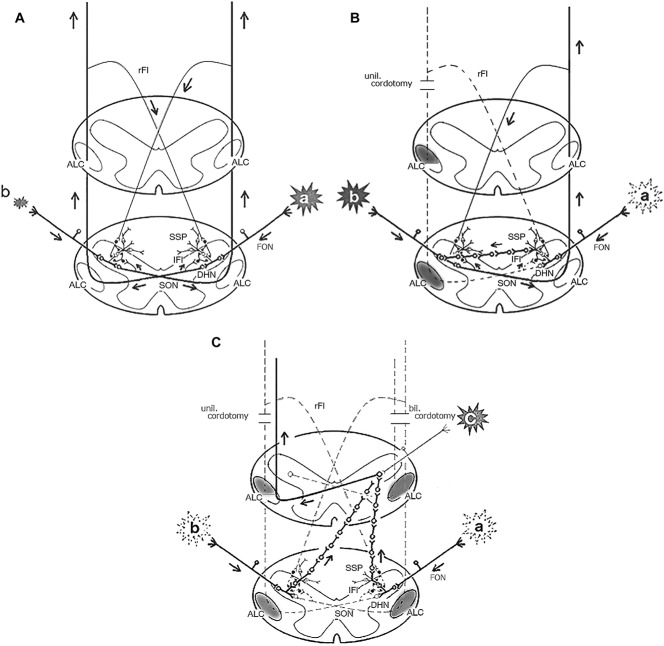FIGURE 2.
Schematic diagram of the proposed mechanism of increased pain and new pain after cordotomy in patients experiencing bilateral pain. A, the stream (←) of noxious impulses and feedback inhibition in the subsidiary pathway (SSP) under normal conditions. Noxious impulses travel up the nociceptive pathway along the anterolateral column (ALC) on the opposite side. The SSP is inhibited by reflected (rFI) and/or local feedback inhibition (lFI). Pain is felt at the lesion on both sides (“a” and “b”), and its severity correlates with the magnitude of noxious input from each lesion. The size of the sparkle corresponds to the severity of pain. FON, first-order neuron; DHN, dorsal horn neuron; SON, second-order neuron. B, release of feedback inhibition by unilateral (unil.) cordotomy and the stream (←) of noxious impulses underlying increased pain. Unilateral cordotomy stops the input from the dominant side of pain “a” from traveling up the usual pathway and releases feedback inhibition on SSP synapses via FONs innervating “a.” The input from “a” is thus transmitted through the SSP and converges on the DHNs corresponding to “b,” thereby increasing pain at “b.” C, release of feedback inhibition by bilateral (bil.) cordotomy and the stream (←) of noxious impulses underlying new pain. Bilateral cordotomy for the increased pain at “b” stops the input from “b” from traveling up the usual pathway and releases feedback inhibition on SSP synapses via FONs innervating “b.” The input from “a” and “b” thus ascends the SSP and converges on the most caudally located DHNs corresponding to “c,” thereby causing new pain at “c.”

